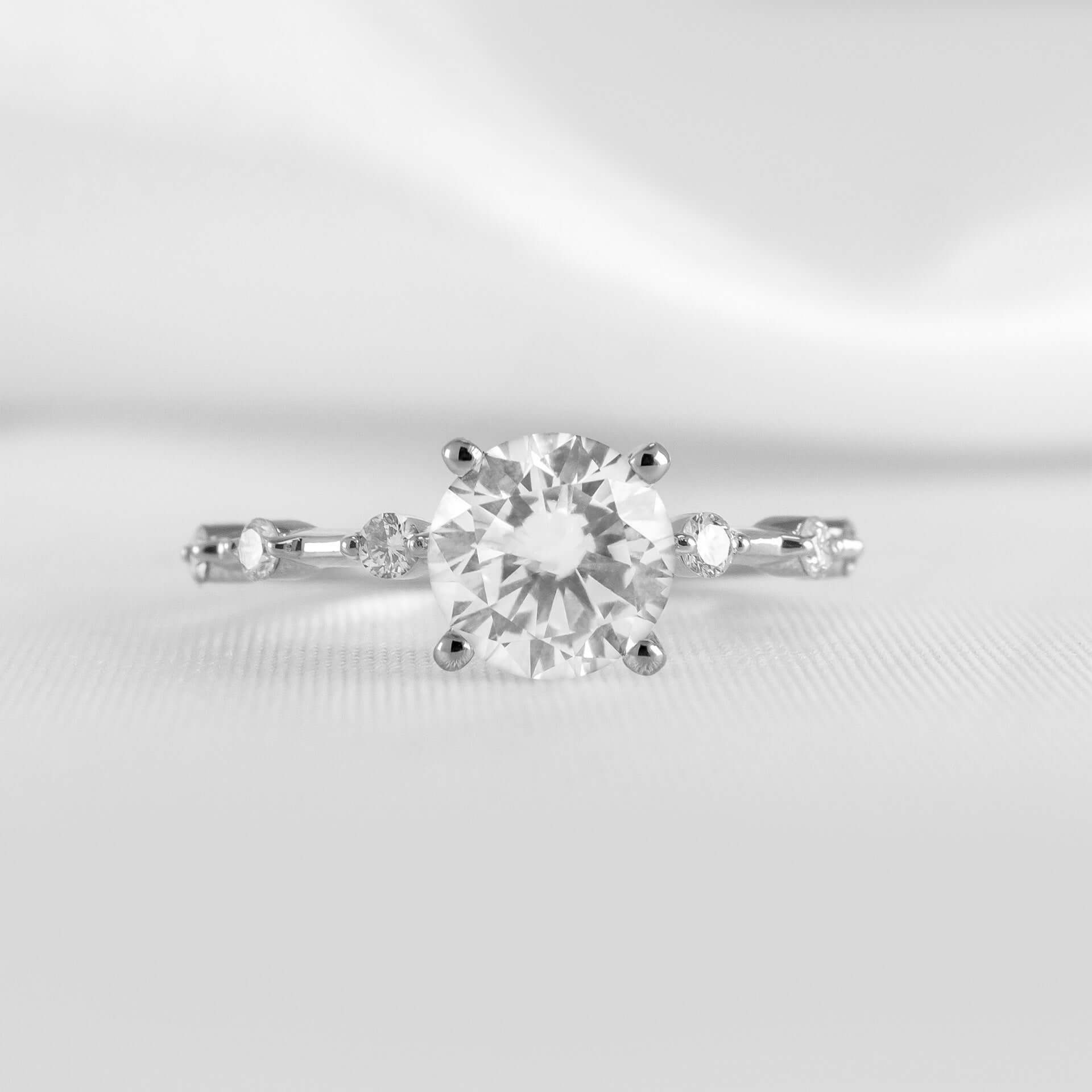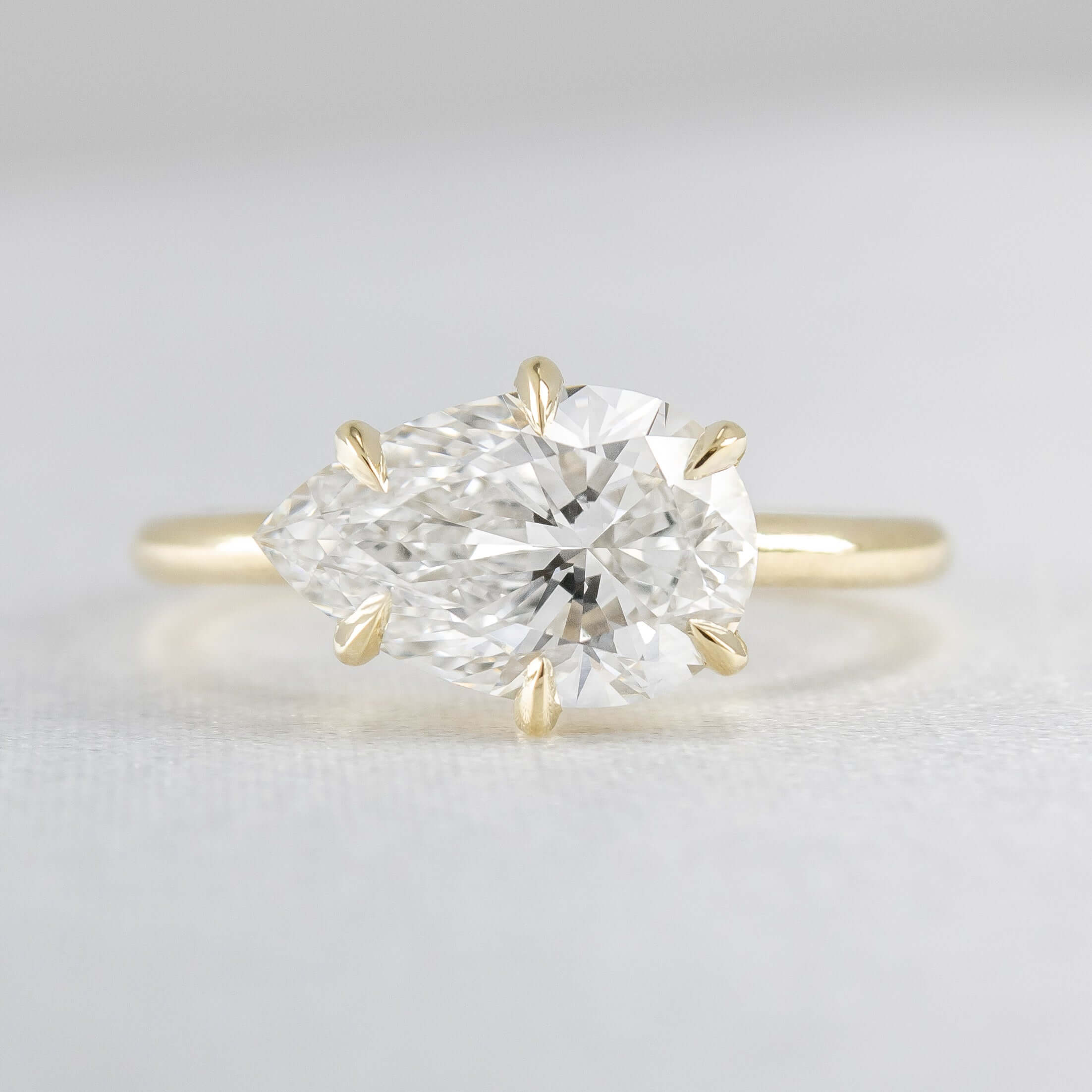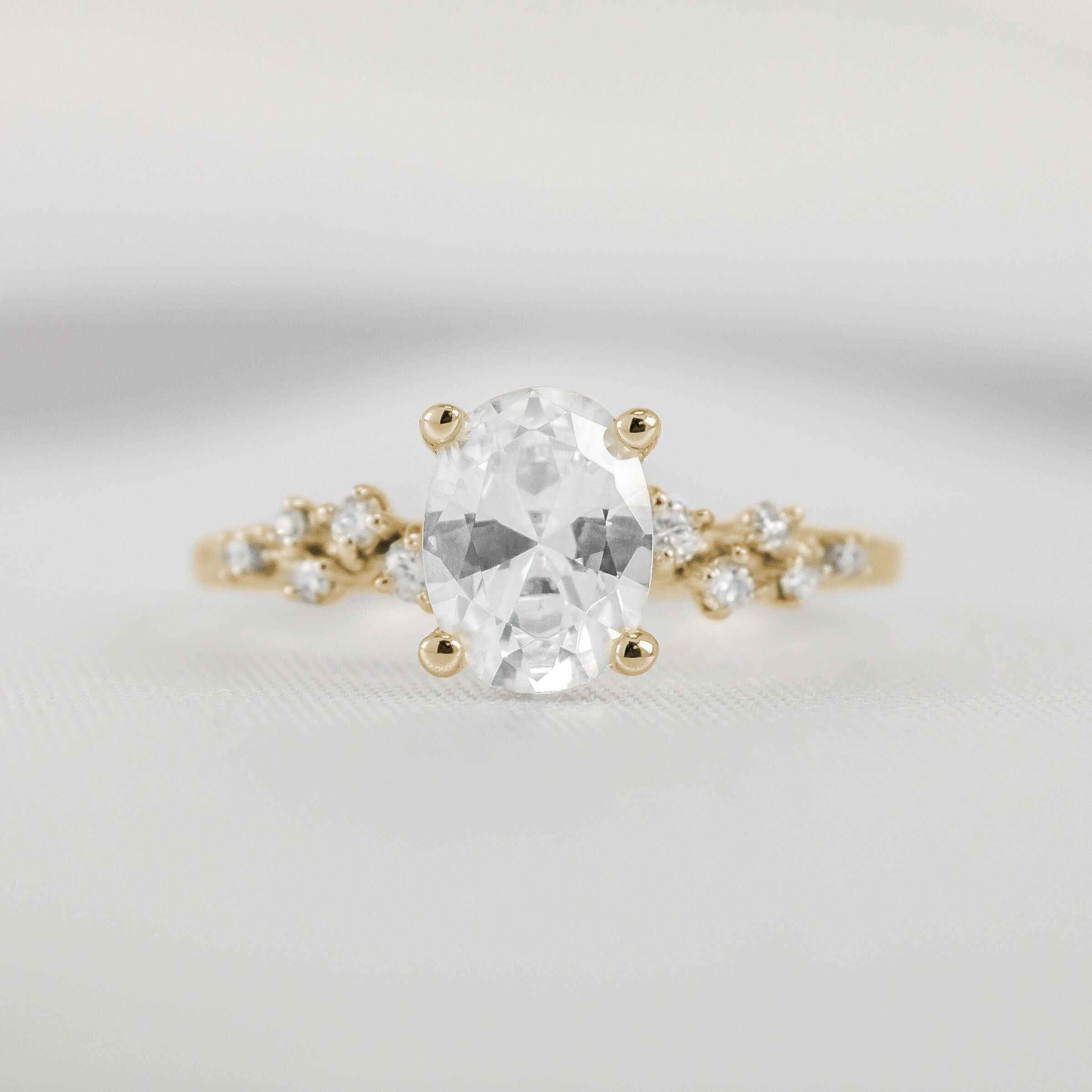About Diamond Polish and Symmetry
Polish
The term "polish" pertains to the overall smoothness and condition of a diamond's surface. A diamond that is well-polished can create sharp reflections and transmit light without distortion, while a diamond that is poorly polished can appear lackluster.
Most diamonds have small imperfections, such as pits, abrasions, nicks, scratches, and burn marks, that cannot be seen without magnification. Gemological laboratories use a grading system ranging from "Poor" to "Excellent" to evaluate the quality of diamond polish. A diamond with a "Good" or better polish grade will not have any visible imperfections to the naked eye, and can only be detected by a jeweler's loupe.
Symmetry
When we talk about symmetry in diamonds, we are referring to the precision of its shape, outline, and alignment of its facets. If a diamond has poor symmetry, you can easily spot a distortion in its shape, and it will not sparkle as much because the light will not be transmitted correctly. Although it may seem straightforward, diamond symmetry is not as simple as it sounds. While many may assume symmetry has to do only with the diamond's shape, it actually has more to do with the alignment of the stone's facets. Gemological laboratories assess diamond symmetry using grades of "Poor," "Fair," "Good," "Very Good," and "Excellent," just as they do with diamond polish. A "Poor" grade indicates that the facet alignment is so subpar that it detracts from the diamond's appearance, which would be evident to even the least experienced buyer. While a "Fair" grade is an improvement, a diamond with better symmetry will reflect light more effectively.
So, as with diamond polish, it's best to stick to grades of "Good" or better. Without a loupe and years of experience, you'll never know the difference between "Good" and "Excellent."



















